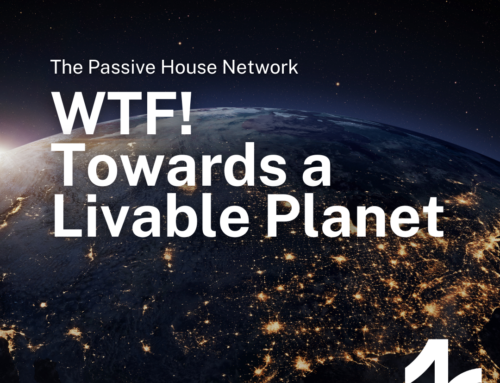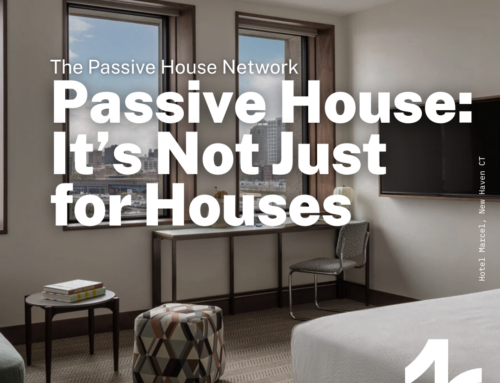The North American Passive House Network (NAPHN) is proud to showcase building industry leaders from around the world in a program, running every Wednesday, 1 – 4 PM EST, June 24 – July 29, that features actionable peer-to-peer information sharing addressing our climate and ecological crisis, to mitigate emerging risks; from calculating energy efficiency in high-density buildings; to understanding the carbon footprint the building is responsible for before operations even begin; to efforts for large-scale building retrofits, at Passive House 2020: Choose Your Future.
NAPHN has long focused on the importance of knowledge sharing among building architects, engineers, and consultants to enable the transformation of our American building industry. This year, in addition to those mainstay efforts, NAPHN is going further, to feature peer-to-peer knowledge sharing between building developers and owners.
Three Owners Roundtable Sessions, running June 24, July 8 and July 22, will provide conversations, in this time of fast-growing regulatory, health, economic and environmental uncertainty, that explore owners’ priorities, strategies and results, working with the Passive House standard. The Roundtables start June 24 with “Getting to Yes”, followed on July 8 with “Making Passive House Good Business” and finally, on July 22, with “Occupancy, Measurement & Management”. The sessions will provide a wide range of insights into developer and owner thinking and actions.
“To better mitigate growing risks, it’s imperative that building developers and owners tell their stories,” says Beth Eckenrode, a co-founder of the AUROS Group, based in Pittsburgh Pennsylvania, and the moderator of the Owners Roundtable Sessions. “By relating their experiences, developers and owners not only inform the professional community they employ but importantly, share with their peers, other building developers, and owners, providing validation and making new peer networks of knowledge resources.”
The opening plenary keynote speaker will be Dan Heath – an innovative business thought leader and New York Times, best-selling author of Made to Stick, Switch and Upstream – who focuses on the mechanisms of systems transformation. The plenary will then feature a discussion between Dan Heath, Wolfgang Feist, Founder of the Passive House Institute (PHI), Janet Joseph, Senior Vice President for Strategy and Market Development at the New York State Energy Research & Development Authority (NYSERDA), and Bronwyn Barry, President of NAPHN, on the opportunities for building market transformation in this time of climate and health crises.
Scientists from PHI and industry professionals will provide the latest technical understanding about critical building systems such as ventilation and heat pumps as well as new tools to calculate building energy balance and resilience.
COVID-19 is a concern everywhere so a specific session, on July 15, will focus on virus transmission, the inherent benefits of the Passive House standard in addressing the threat, and further strategies to mitigate the newly appreciated risks.
The program is not only built to support the efforts of everyone in the building industry, from students to professionals, to sustainability directors and building managers, but will provide greater access to expertise and empower each attendee to be an active participant in knowledge sharing and production because it’s structured as a co-created event. Co-Creation is the production of insights and meaning in conversation. Participant conversations drive processing power and make information more accessible, actionable, and valuable.
“In moving to an online format, we discovered a whole new dynamic in knowledge exchange and production, that puts audience members on the stage too.” remarked Bronwyn Barry, NAPHN, President. “As we learn more about the potential of co-creation, we’re excited to experience it, and think attendees will be too.”
Co-Creation is possible because the PH2020 program is released from the bounds of live in-person sequential time. The program is prerecorded and the conversations happen simultaneously with the session broadcast, in the chat. Now, during every moment of every session, attendees can ask questions, discuss, and probe, with the speakers and each other, while getting further explanations and links to resources and other relevant information, joined in discussion with other topic experts – producing crowdsourced added value.
The program is spaced over six weeks for comfort and it’s co-created for high-performance information processing. With your participation, we will make new and powerful pathways forward. Join us!




